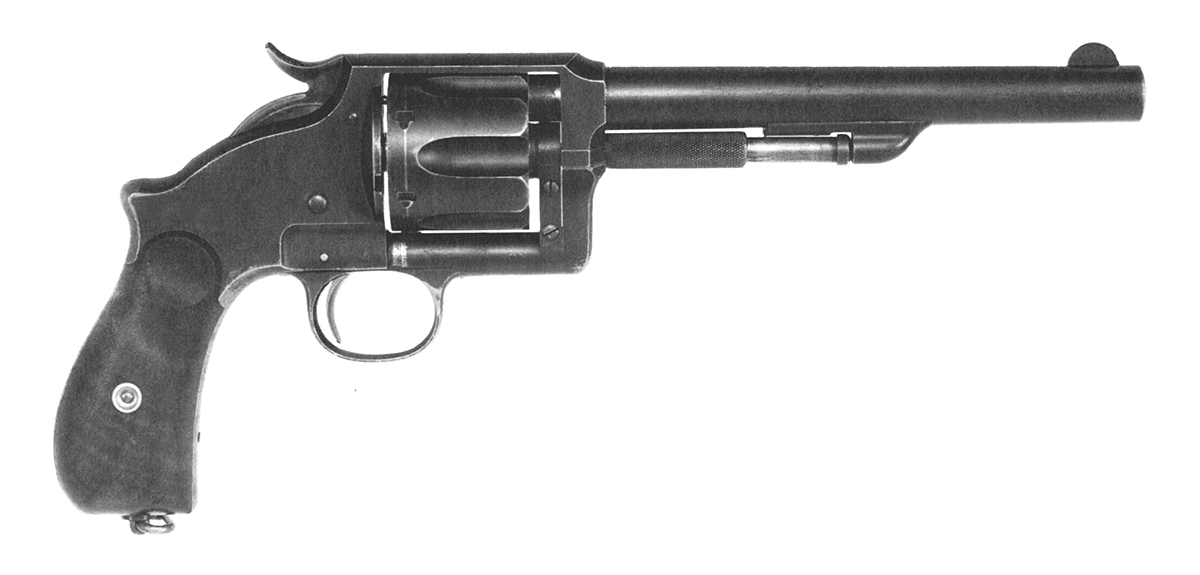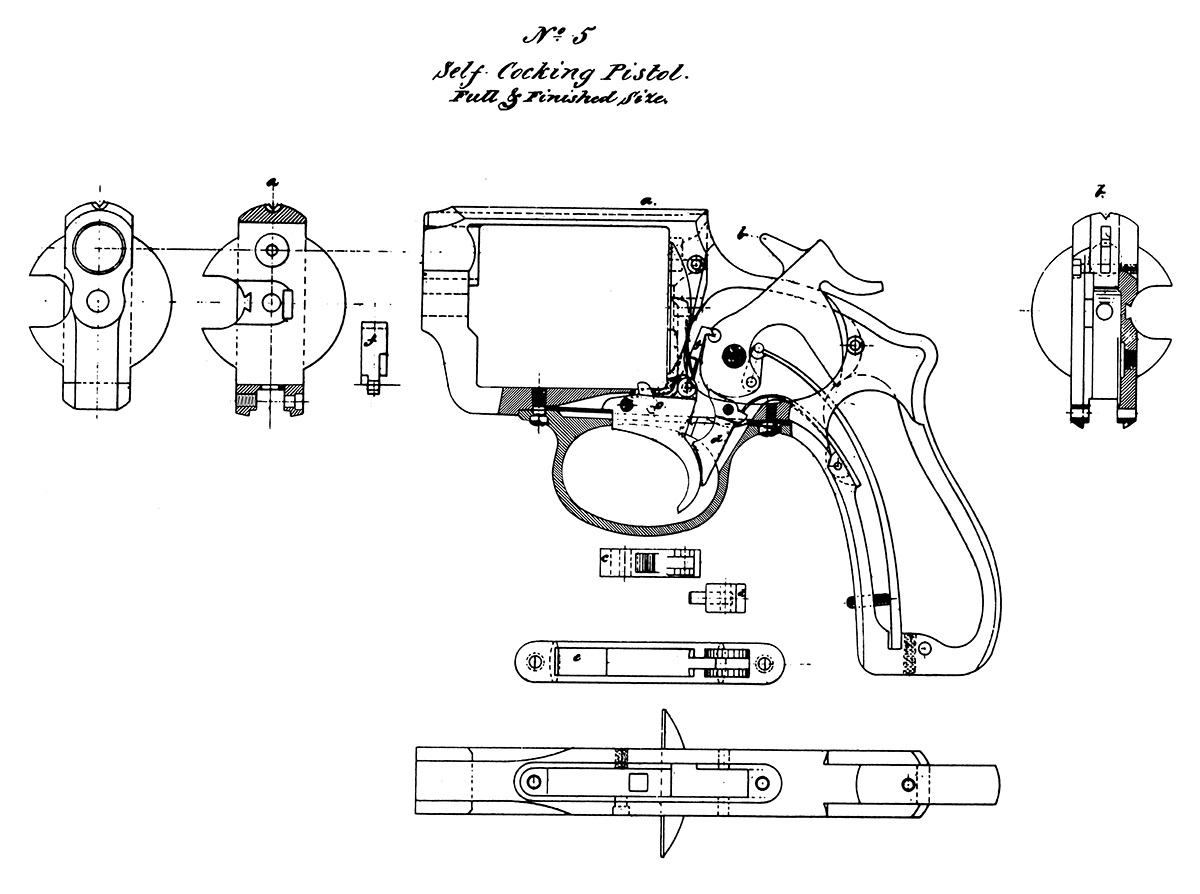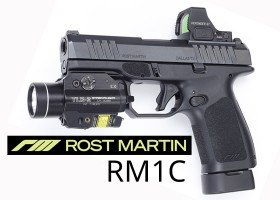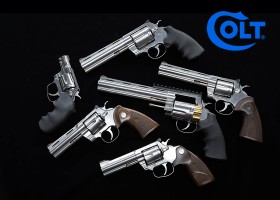2025/05/10
Borchardt Pistole
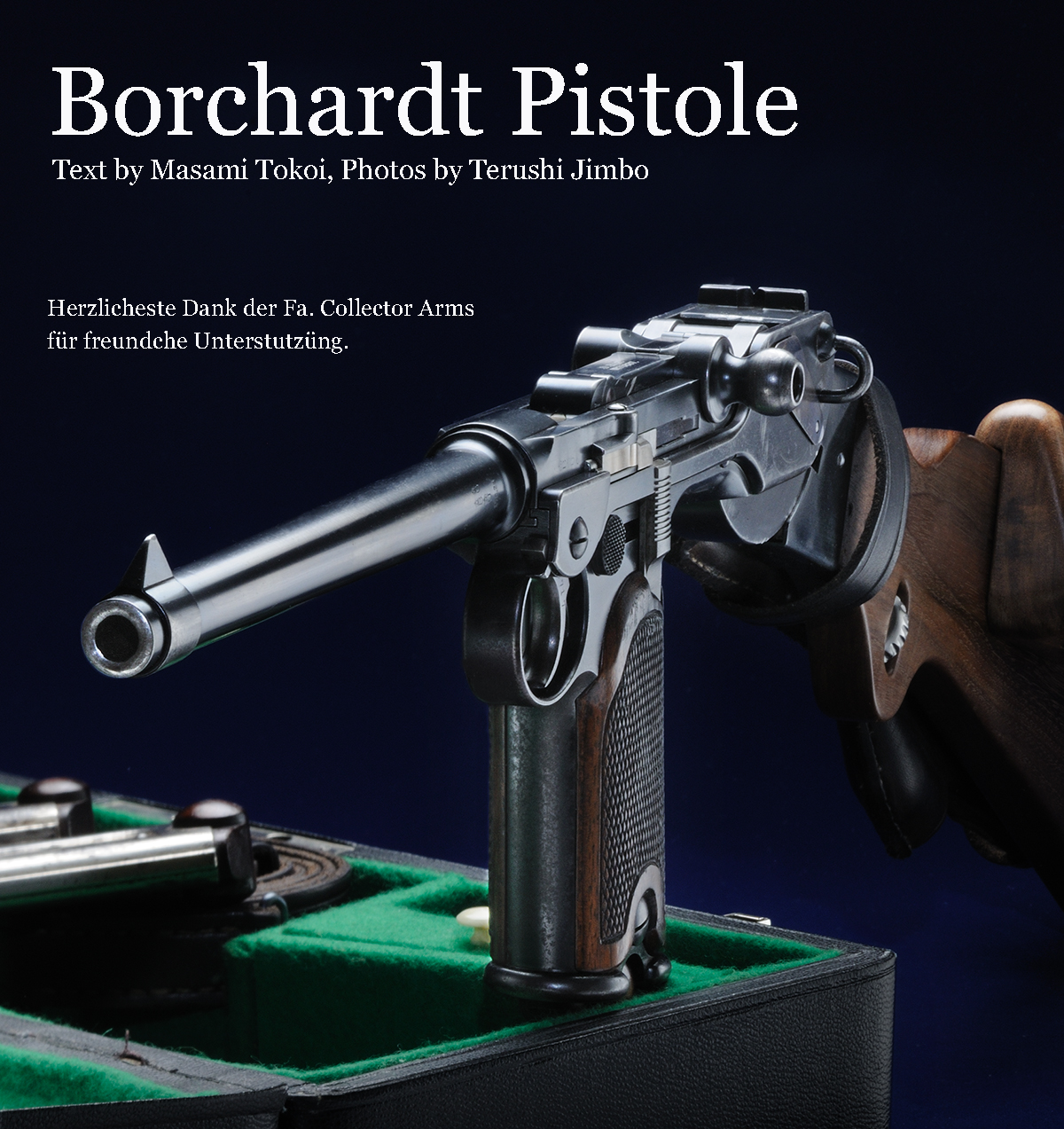
Text by Masami Tokoi
Photos by Terushi Jimbo
Published in Gun Professionals, October 2012
(with minor revisions by the GP Web Editor in May 2025)
The Borchardt Pistole was the world’s first mass-produced military semi-automatic pistol. No country adopted it for military use, and its production numbers were limited, so it can hardly be called a success. However, its mechanism was passed on to the Luger pistol, leaving a significant mark on history.
The Borchardt Pistole is known as one of the earliest large-scale, mass-produced military semi-automatic pistols. However, Bergmann’s semi-automatic pistol was likely a bit earlier in terms of industrial mass production. The Theodore Bergmann Model 1893, a 5 mm caliber semi-automatic pistol designed by Louis Schmeissor, is considered the world’s first mass-produced semi-automatic pistol.
Though it came along a bit later, the Borchardt Pistole was a large semi-automatic pistol with military capabilities, firing significantly more powerful ammunition than the Bergmann Model 1893. This secured its position as the world’s first mass-produced military semi-automatic pistol.
This Borchardt Pistole, with its distinctive design incorporating a unique toggle-link locking mechanism, succeeded in attracting significant attention from the outset.
However, like many early semi-automatic pistols, the Borchardt Pistole had a somewhat complex structure, making it costly and time-consuming to manufacture. Additionally, it was large and not particularly well-balanced, which hindered its success as a military pistol. Despite attracting significant attention, no country adopted the Borchardt Pistole for military use, and its production numbers remained limited. Consequently, it was discontinued soon after an improved model appeared.
However, the toggle-link locking mechanism principle incorporated into the Borchardt Pistole was directly carried over to the Parabellum Pistole (also known as the Luger Pistol), which emerged as an improved version of the Borchardt Pistole. It lived on as the standard German military pistol until the end of World War II in 1945.
The unique toggle-link locking mechanism of the Luger pistol, with its distinctive action, continues to captivate many collectors to this day. And the Borchardt Pistole, as its prototype, will forever be remembered.
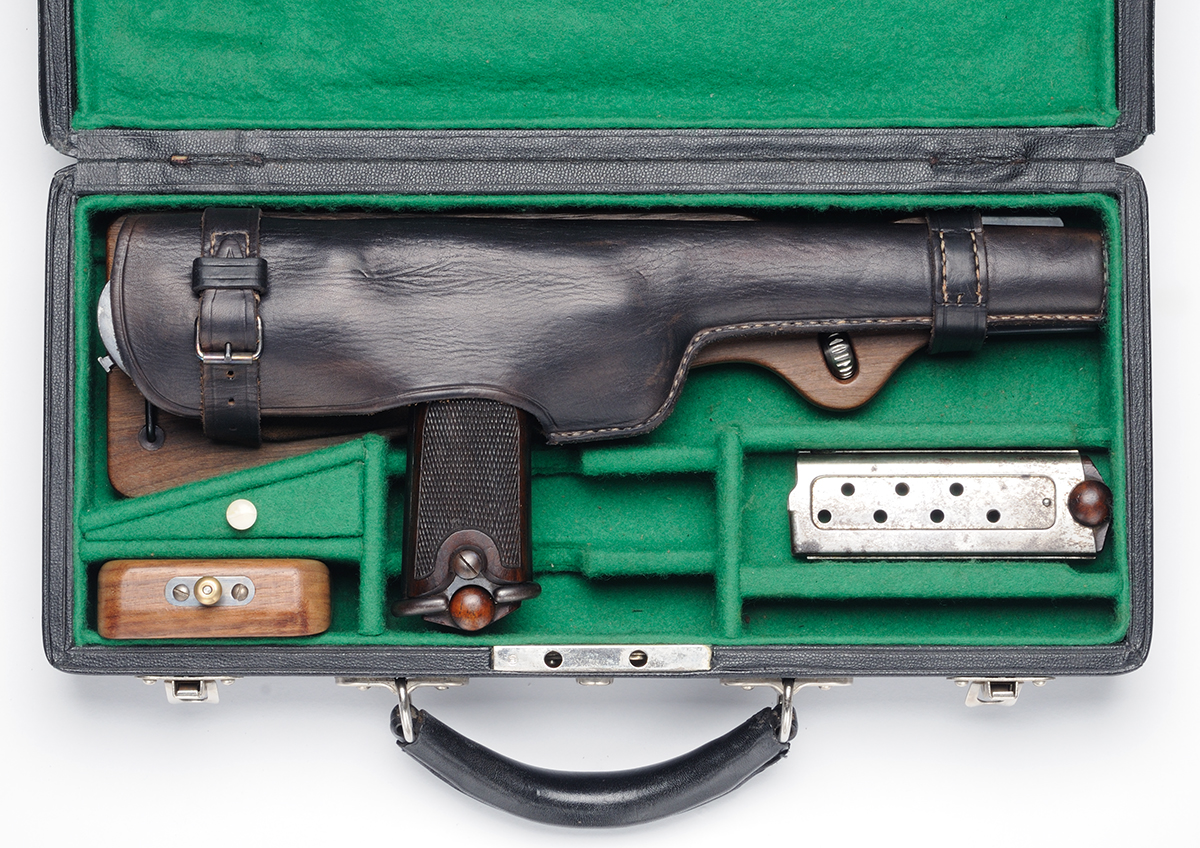
Hugo Borchardt, the developer of the Borchardt Pistole
Hugo Borchardt was born on June 6, 1844, in Magdeburg, Prussia.
It’s said that Hugo Borchardt immigrated to America with his parents in 1860 when he was 16 years old. However, this is the only confirmed fact about his life from birth until his youth and the detailed history is completely unknown.
Nevertheless, thanks to the efforts of many researchers of the Borchardt and Luger pistols, the path of Hugo Borchardt after he became a firearms development engineer has become somewhat clear.
Hugo Borchardt began his career in firearms in 1872 when he joined Pioneer Breech Loading Arms, located on Broadway, New York City. At the time, Pioneer Breech Loading Arms was a firearms dealer focused on sales rather than manufacturing. The company also acted as a trading company, handling Sharps Rifles.
Borchardt later transitioned to Singer Sewing Machine. During this time in America, sewing machines were essential for producing clothing, much like rifles were vital for obtaining food. Sewing machines, like rifles, required high-quality steel as a raw material. This overlap in materials and manufacturing expertise is why many firearms manufacturers had previously been involved in producing sewing machines. The operating mechanisms of sewing machines and repeating rifles also shared similarities.
However, Hugo Borchardt did not remain at Singer for long. He moved on to Colt’s Patent Firearms in Hartford, Connecticut, but his tenure was brief.
In January 1876, Borchardt was appointed factory superintendent at Sharps Rifle Manufacturing. This rapid career progression exemplifies the opportunities available in America for someone with drive and ability.
However, it appears that Hugo Borchardt’s rapid career advancement was not merely due to luck. In 1878, Sharps Rifle Manufacturing Company released the Sharps-Borchardt Model 1878, a rifle designed and patented by Hugo Borchardt.
The Sharps-Borchardt Model 1878 (also known as the Sharps Model 1878) featured a significantly different and more modern breech-loading rifle mechanism compared to the traditional falling block breech and side hammer breech-loading rifles that Sharps Rifle Manufacturing had previously produced.
Based on his career trajectory, it’s unlikely that Hugo Borchardt had formal mechanical engineering training. It’s more plausible that he was self-taught in mechanical design after immigrating to America. Remarkably, just over a decade after arriving in the US, he was entrusted with designing a new rifle for a leading rifle manufacturer of the time. This suggests that Hugo Borchardt possessed not only great dedication but also a natural talent for firearms design.
The Sharps-Borchardt Model 1878 (also known as the Sharps Model 1878) eliminated the side hammer characteristic of previous Sharps rifles, which was located on the right side of the receiver. Instead, it incorporated a striker-type firing pin within the falling block breech, representing a more modern and mechanically efficient design.
The operating and loading method remained similar to previous Sharps rifles: by rotating the trigger guard downward, the falling block breech was lowered, allowing access for loading. After loading the ammunition, rotating the trigger guard back up raised the breech, simultaneously cocking the striker built into the falling block breech and preparing it for firing.
Sharps Rifle Manufacturing Company marketed the Sharps-Borchardt Model 1878 (also known as the Sharps Model 1878) for both hunting and competitive shooting sports. Additionally, the company produced variants of the rifle for military and law enforcement use, highlighting its versatility and appeal to a wide range of users.
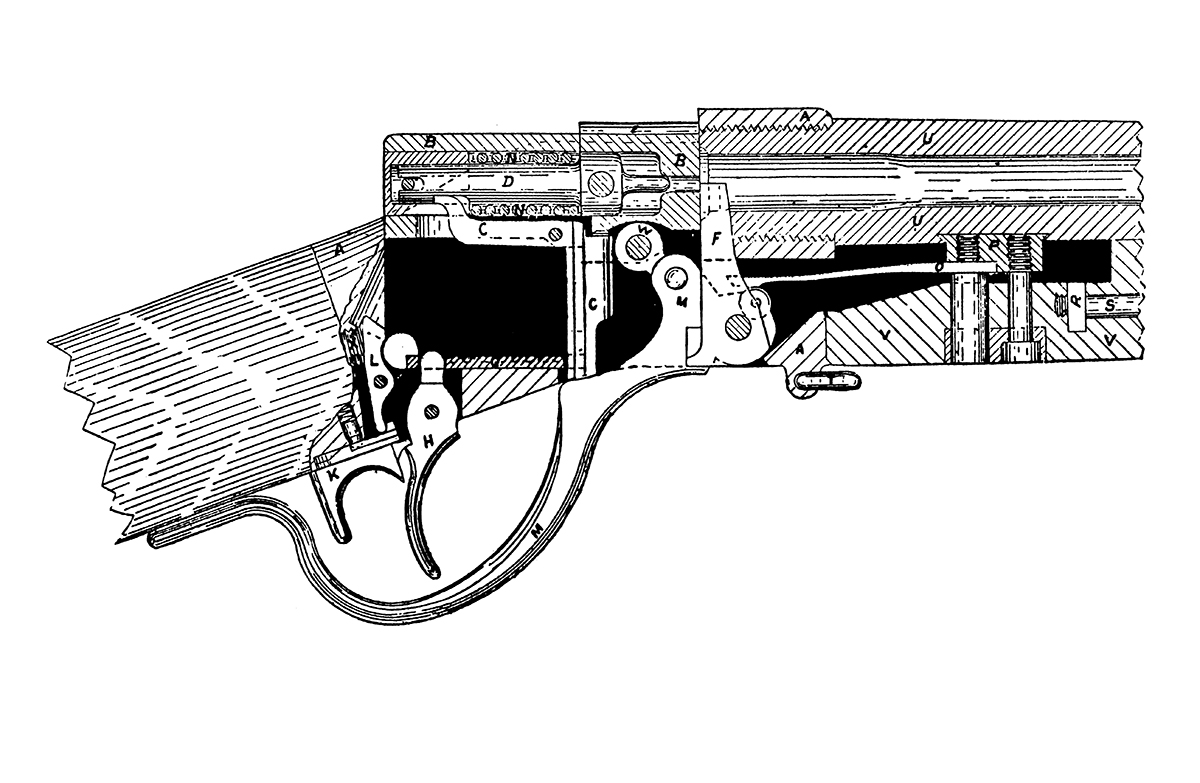
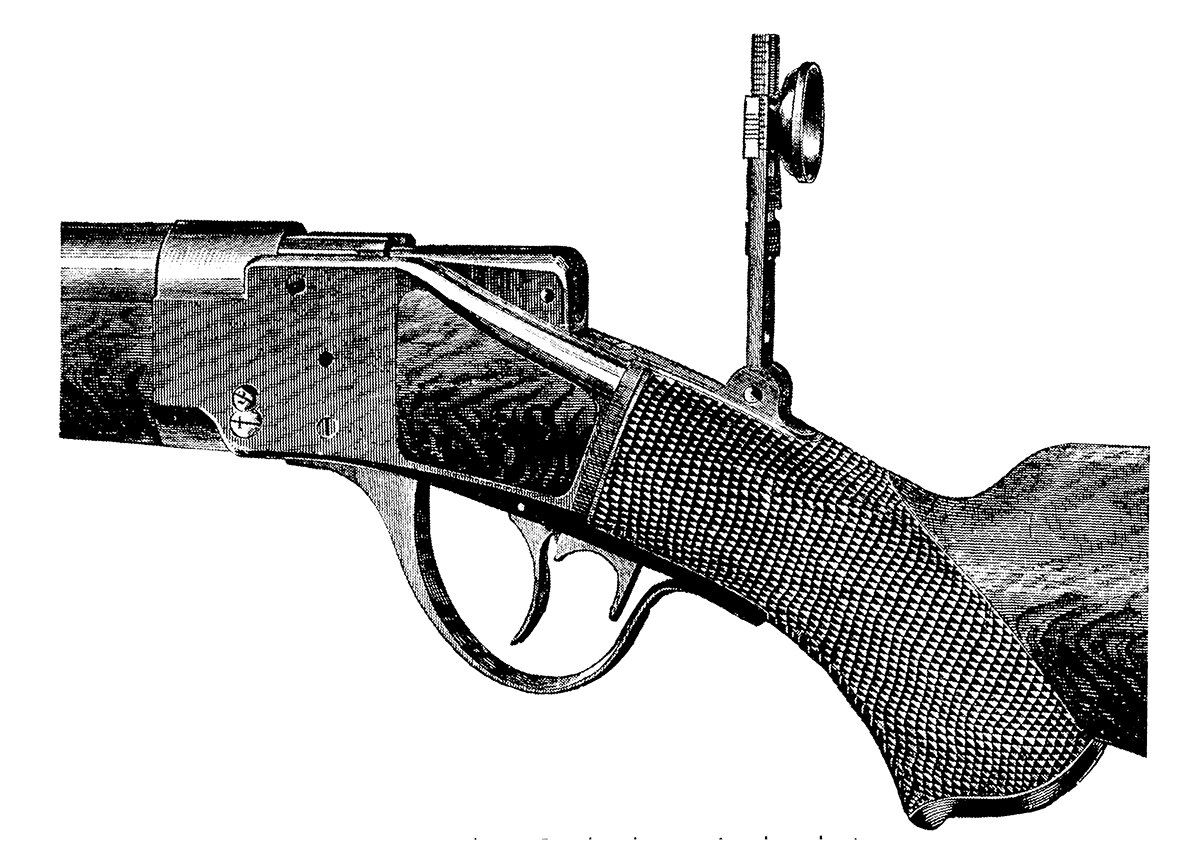
Concurrent with his work on the Sharps-Borchardt Model 1878 rifle for Sharps Rifle Manufacturing Company, Hugo Borchardt was also involved in revolver development at Winchester Repeating Arms Company, contributing to the company’s portfolio of innovative firearms.
During this period, Winchester Repeating Arms Company was striving to expand its product line to become a comprehensive firearms manufacturer, and it was achieving significant success with its lever-action repeating Winchester Model 1873. Concurrently, Colt’s Patent Firearms Manufacturing Company, having previously enjoyed great success with percussion cap revolvers, introduced the metallic cartridge Colt Single Action Army revolver in 1873, marking a significant milestone in the evolution of handgun design.
The era was certainly transitioning to firearms that used metallic cartridges.
For pioneers, being able to use the same ammunition for both rifles and pistols was a significant advantage. However, the Colt Single Action Army Revolver, which became the standard-issue pistol for the U.S. Army in 1873, faced production challenges that led to delays in its delivery to the military.
Given this situation, Winchester Repeating Arms saw an excellent opportunity to enter the field of large metallic cartridge revolvers and planned the development and production of revolvers.
Hugo Borchardt was entrusted with part of the design. Along with engineers such as William Mason, who had recently worked at Colt and contributed to the development of the Single Action Army revolver, and Stephen Wood, who had previously worked at Colt and Remington, Borchardt began developing the Winchester revolver.
While Hugo Borchardt was deeply involved in the development, it remains unclear which specific parts he was responsible for.
